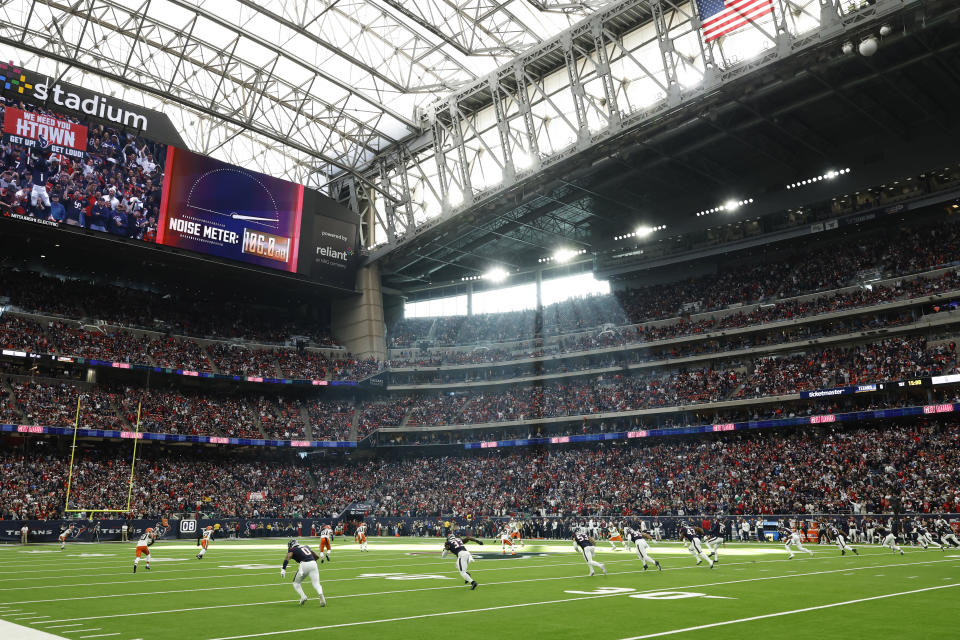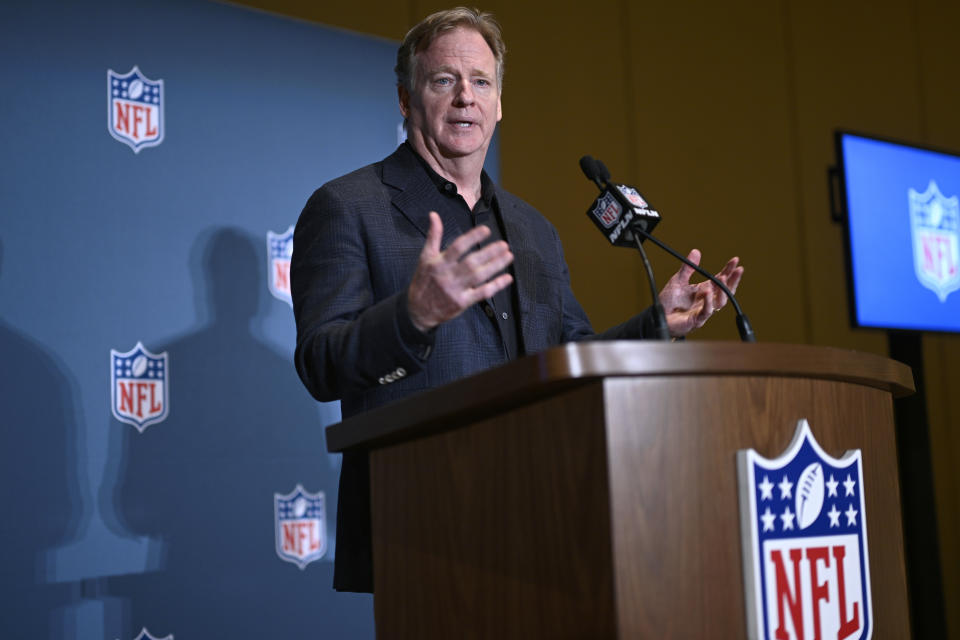Why did the NFL change the kickoff rule and how will it be implemented?
NFL owners were busy this week, approving a series of rule changes that address player safety, overhaul the kickoff and expand the use of instant replay.
While the changes were all overwhelmingly approved they don't come without some level of controversy, with many players opposing the ban on the use of the “ swivel hip-drop” tackle and many questions about how the rules will be enforced and the impact they will have on games.
The most significant change revolves around the kickoff that has gone from one of the more exciting plays with game-breakers like Devin Hester threatening to take a kick back 100 yards for a score to one with almost no action after most kicks resulted in no returns last season.
Here's an explanation of some of the rules that will be in place this fall.
WHAT'S NEW WITH KICKOFFS?
Basically everything.
Owners agreed to a one-year trial of a radical change on kickoffs with a new system borrowed heavily from what was used in the XFL spring league.
The changes were made in hopes of limiting the high-speed collisions that made kickoffs so dangerous while incentivizing more returns after a sharp rise in touchbacks in recent years.
Standard kicks will still begin from the 35 but everything else will look different.
The 10 kick coverage players will line up at the opposing 40, with five on each side of the field.
The return team will have at least nine blockers lined up in the “set up zone” between the 30- and 35-yard line with at least seven of those players touching the 35. Up to two returners will be allowed inside the 20.
Only the kicker and two returners will be allowed to move until the ball hits the ground or is touched by a returner inside the 20.
Any kick that reaches the end zone in the air can be returned, or the receiving team can opt for a touchback and possession at the 30. Any kick that reaches the end zone in the air and goes out of bounds or out of the end zone also will result in a touchback at the 30.
If a ball hits a returner or the ground before the end zone and goes into the end zone, a touchback will be at the 20 or the kick can be returned. Any kick received in the field of play must be returned.
If a kick goes out of bounds before the end zone or doesn't reach the landing zone, the return team gets the ball at the 40.
Under current rules, any touchback — or if a returner calls for a fair catch in the field of play — results in the receiving team getting the ball at its 25.
WHY MAKE A CHANGE?
Kickoff returns were becoming obsolete after a series of rule changes to make them safer — and rarer — over the past several seasons.
Last season led to a new low with just 21.8% of all kicks being returned as both kicking and receiving teams too often opted to avoid the risk of a possible return. Only four kicks were returned for touchdowns for the lowest total since 1993 — just one more than Jacoby Ford had by himself for the Raiders as recently as 2010.
The return rate had a significant drop from 37.5% in 2022 and is down from 80% in 2010 before a series of rule changes on alignment, blocking techniques and the touchback eroded those numbers. The XFL had a 97% return rate on kickoffs in the 2023 season.
The changes were put in place because kickoffs were the most dangerous plays with the high-speed collisions contributing to concussions.
The hope is the new rule will increase the number of returns without making it more dangerous as the new return will be more similar to a regular running play than the old version.
The change also could provide a boost in scoring after the second-lowest scoring season since 2009. Points per game have dropped by a combined six points since 2020 but the new kickoff rule could lead to better field position and more points. Teams started the average possession after a kickoff 25.5 yards from their own end zone. That was as high as the 29 in 2002 when kickoffs played a much bigger role.
WHAT ABOUT ONSIDE KICKS?
The new rules eliminate the possibility of surprise onside kicks like the one that famously turned the tide in Super Bowl 44 when New Orleans stole an extra possession by recovering an onside kick to open the second half against Indianapolis.
Trailing teams will have to declare their intention to attempt an onside kick in the fourth quarter and those will be conducted under the same rules that had previously been in place.
The surprise onside kick isn't a common practice, with only one being attempted all last season when Denver had an unsuccessful attempt on the opening kick of the season against Las Vegas.
In all, there have been five successful onside kicks in the first three quarters of games in the past five seasons.
HIP-DROP TACKLES
The other big rule change was the ban on a dangerous type of tackle called the “swivel hip drop.”
NFL executive Jeff Miller said the tackle was used 230 times last season and resulted in 15 players missing time with injuries. It will now result in a 15-yard personal foul penalty if officials spot it on the field or fines the following week.
A violation will occur if a defender “grabs the runner with both hands or wraps the runner with both arms and unweights himself by swiveling and dropping his hips and/or lower body, landing on and trapping the runner’s leg(s) at or below the knee.”
There were 212 unnecessary roughness calls last season in the regular season and playoffs so this could lead to a significant increase unless defenders curb their behavior.
OTHER CHANGES
Some of the other notable changes involved tweaks to the instant replay system. Teams now get a third challenge if one of their first two challenges is successful — instead of both — and a few more types of plays are subject to replay. There were less than a dozen games in the regular season and playoffs last season when a coach used both challenges and was successful on only one.
Replay can now determine whether a snap got off before the game clock expired, can advise officials on the field on certain elements of roughing the passer and intentional grounding and can overrule an incorrect call on the field that a passer was down or out of bounds before throwing a pass.
___
AP NFL: https://apnews.com/hub/nfl


